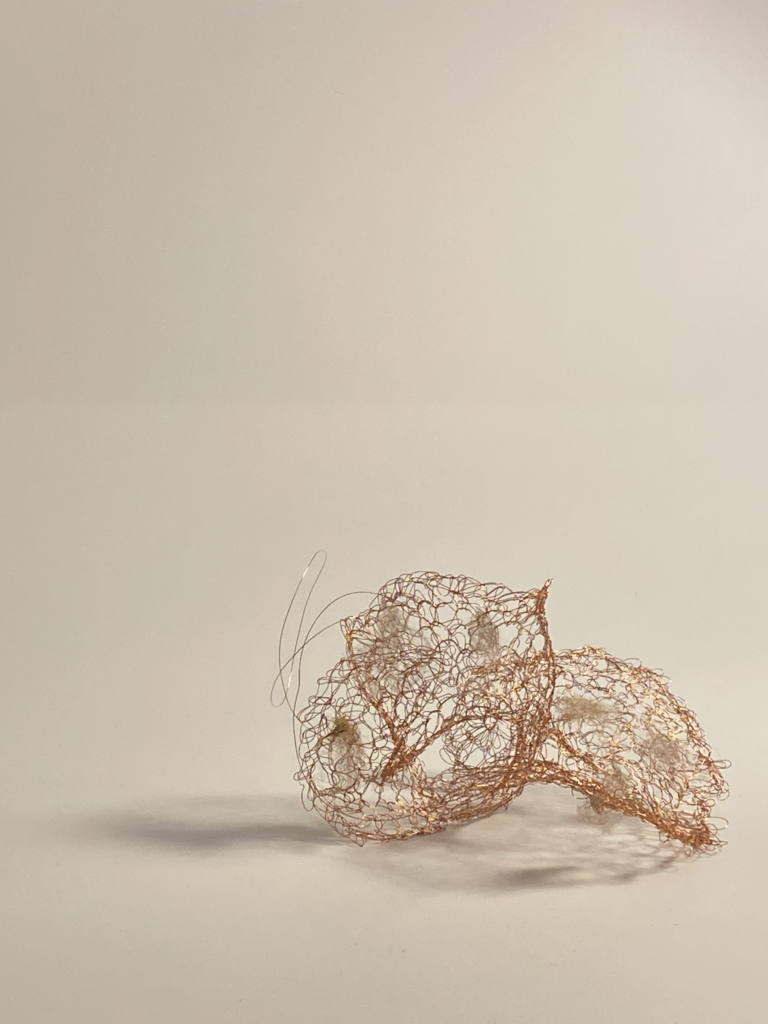
If I try to construct it at all, an ‘architecture of language’ ought to be light, almost immaterial. For now, I have opted for wire and wool. Copper wire strands carefully extracted from a reclaimed wire loom of a scrap car. I work with single copper strands about 0.2mm thick. I add natural fibre to accentuate the organic shapes in ‘natural’ language. I first experimented with plant fibre and cordage (nettles, rush, bramble bast, Iris Iberica, dandelion). They seemed too substantial though, unable to reflect the fleeting, ephemeral quality of language.

So I opted for raw wool, from a flock in Devon. I do not spin or twist the fibre, their structure remains almost intact, with individual fibres clearly visible. Linguists have talked about ‘densities’ in natural language, parts of its woven texture that are more opaque. The wool fibre inhabits places within the structural weave that are denser, almost like a double stitch in a 3D fabric. These are densities within a light-weight structure, so I am looking for a visual effect akin to smoke, dust, powder. This blog is mostly made up of photos of this work, some initial shapes and experiments with wire and wool.

Such experiments are influenced by the work of Frei Otto at the Institute for Lightweight Structures at the University of Stuttgart. He worked with surfaces derived from soap film, a delicate layer of liquid surrounded by air, the point of contact between two soap bubbles. A further step would be to try to create visual effects my immersing parts of the copper lace structure in soapy water. For now, I work with wool fibre as it allows for precision.

References
Otto F, Rasch B (1996) Finding form: Towards an architecture of the minimal. Axel
Menges, Stuttgart
Rey-Debove, J. (1978). Le métalangage: Étude linguistique du discours sur le langage. Le Robert.
p: 265